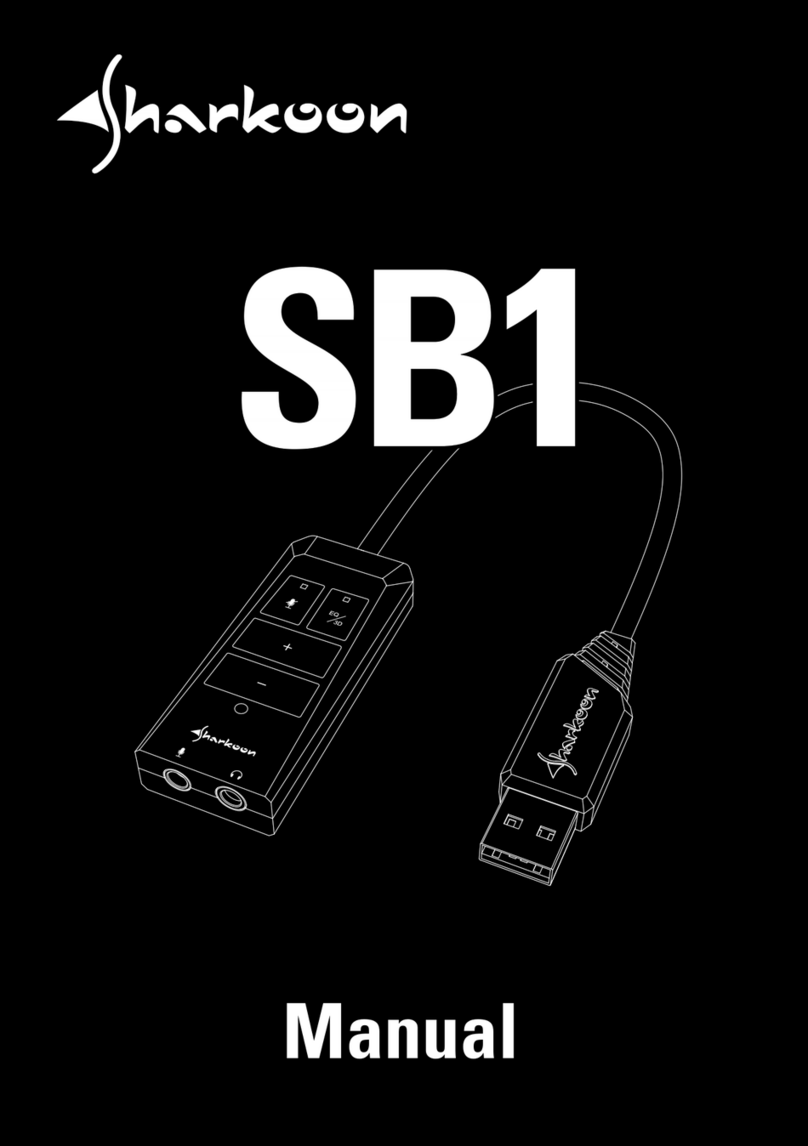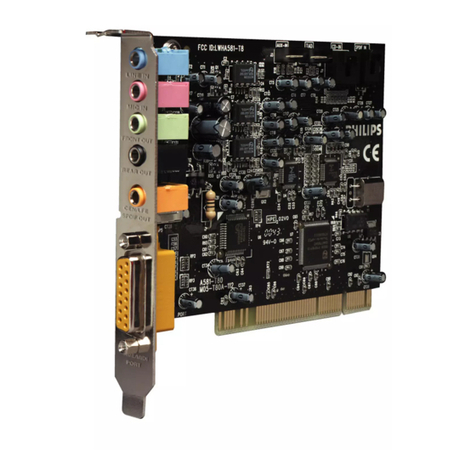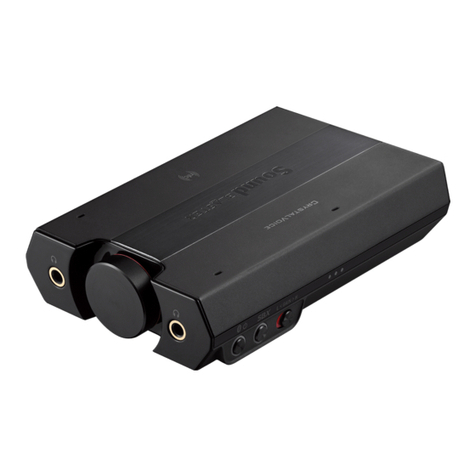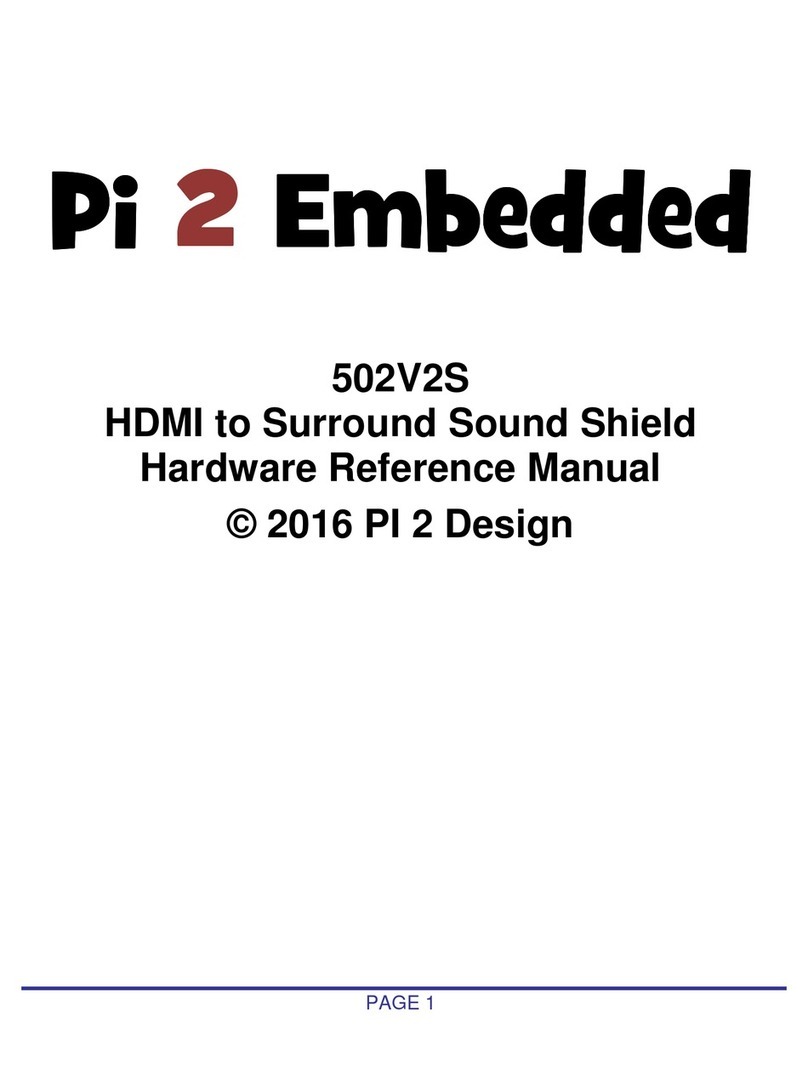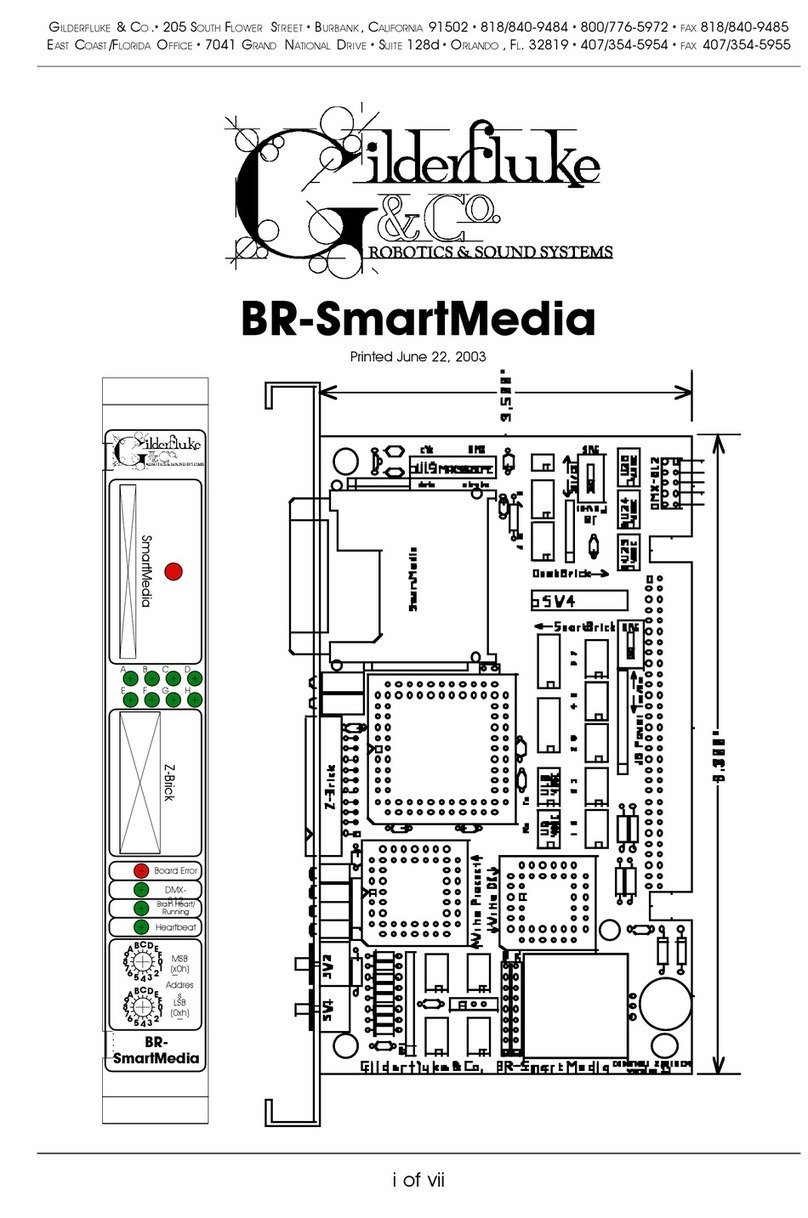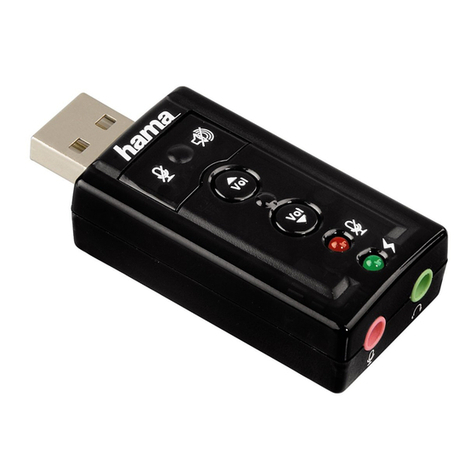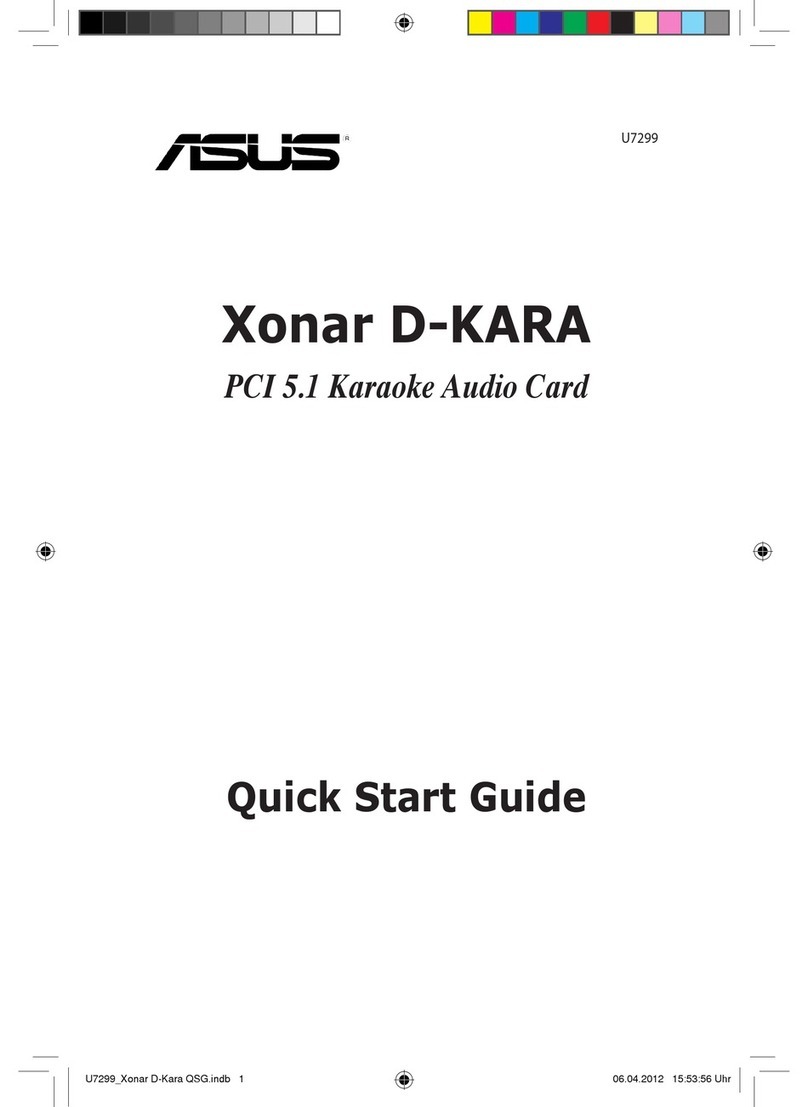Designer Systems pHAT-HIFI Parts list manual

pHAT Module Series
pHAT-HIFI Technical Description
pHAT-HIFI Technical Description Page 2 of 20
Our aim is to provide customers with timely and comprehensive service. For
any assistance, please contact our company headquarters:
Designer Systems Ltd.
11 Castle Street, Truro, Cornwall TR1 3AF, United Kingdom.
Tel: +44 (0) 1872 262000
Email:sales@designersystems.co.uk
For more information, please visit:
http://www.designersystems.co.uk
For technical support, or to report documentation errors, please visit:
http://www.designersystems.co.uk/robotics
Or email to: support@designersystems.co.uk
GENERAL NOTES
DESIGNER SYSTEMS OFFERS THE INFORMATION AS A SERVICE TO ITS CUSTOMERS. THE
INFORMATION PROVIDED IS BASED UPON CUSTOMERS’ REQUIREMENTS. DESIGNER SYSTEMS
MAKES EVERY EFFORT TO ENSURE THE QUALITY OF THE INFORMATION IT MAKES AVAILABLE.
DESIGNER SYSTEMS DOES NOT MAKE ANY WARRANTY AS TO THE INFORMATION CONTAINED
HEREIN, AND DOES NOT ACCEPT ANY LIABILITY FOR ANY INJURY, LOSS OR DAMAGE OF ANY
KIND INCURRED BY USE OF OR RELIANCE UPON THE INFORMATION. ALL INFORMATION
SUPPLIED HEREIN IS SUBJECT TO CHANGE WITHOUT PRIOR NOTICE.
COPYRIGHT
THE INFORMATION CONTAINED HERE IS PROPRIETARY TECHNICAL INFORMATION OF
DESIGNER SYSTEMS LTD. TRANSMITTING, REPRODUCTION, DISSEMINATION AND EDITING OF
THIS DOCUMENT AS WELL AS UTILIZATION OF THE CONTENT ARE FORBIDDEN WITHOUT
PERMISSION. OFFENDERS WILL BE HELD LIABLE FOR PAYMENT OF DAMAGES. ALL RIGHTS ARE
RESERVED IN THE EVENT OF A PATENT GRANT OR REGISTRATION OF A UTILITY MODEL OR
DESIGN.
Copyright © Designer Systems Ltd. 2019. All rights reserved.

pHAT Module Series
pHAT-HIFI Technical Description
pHAT-HIFI Technical Description Page 3 of 20
About the Document
History
Revision Description Date Author
0.01.00 Create 27/7/19 DIO
1.00.00 First release 23/8/19 -

pHAT Module Series
pHAT-HIFI Technical Description
pHAT-HIFI Technical Description Page 4 of 20
Contents
Page No.
1Introduction.......................................................................................................................6
2Product Concept ................................................................................................................7
2.1 GeneralDescription.........................................................................................................7
2.2 Key Features....................................................................................................................8
3Application.........................................................................................................................9
3.1 Installation.......................................................................................................................9
3.1.1 Line Output Connection................................................................................................9
3.1.2 SpeakerPower Supply and SpeakerSelection...............................................................9
3.1.3 SpeakerConnection......................................................................................................9
3.2 Operation........................................................................................................................9
3.3 PinAssignment..............................................................................................................10
3.4 Power Supply.................................................................................................................10
3.4.1 SpeakerPower Input...................................................................................................10
3.4.2 DAC Power Supply Pins...............................................................................................10
3.5 Audio Interfaces ............................................................................................................11
3.5.1 SpeakerTerminals ......................................................................................................11
3.5.2 Line Output Connection..............................................................................................11
3.6 I2S Interface...................................................................................................................12
3.6.1 I2S Interface Pins.........................................................................................................12
3.6.2 I2S Communication .....................................................................................................12
3.7 Configuration.................................................................................................................13
3.7.1 File Installation ...........................................................................................................13
3.7.2 System File Modification.............................................................................................13
3.7.3 Hardware Testing........................................................................................................14
4Electrical Characteristics..................................................................................................15
4.1 Absolute Maximum Ratings...........................................................................................15
4.2 Operating Conditions.....................................................................................................15
4.3 Current Consumption....................................................................................................16
5Mechanical.......................................................................................................................17
5.1 Dimensions....................................................................................................................17
6References .......................................................................................................................18
6.1 I2S protocol....................................................................................................................18
7Appendix..........................................................................................................................19
8Compliance ......................................................................................................................20

pHAT Module Series
pHAT-HIFI Technical Description
pHAT-HIFI Technical Description Page 5 of 20
Tables
Table 1:Key Features...............................................................................................................8
Table 3: Power Supply Pins.....................................................................................................10
Table 3: Speaker Terminals ....................................................................................................11
Table 4: Line Output Connection............................................................................................11
Table 6: I2S Interface Pins.......................................................................................................12
Table 7: Absolute Maximum Ratings......................................................................................15
Table 8: Normal Operating Conditions ...................................................................................15
Table 9: Current Consumption ...............................................................................................16
Table 10: Related Documents.................................................................................................19
Table 11: Terms and Abbreviations........................................................................................19
Figures
Figure 1: Dimensions..............................................................................................................17
Figure 2: I2S protocol..............................................................................................................18

pHAT Module Series
pHAT-HIFI Technical Description
pHAT-HIFI Technical Description Page 6 of 20
1Introduction
This document defines the pHAT-HIFI Digital audio module and describes the hardware
interface that is connected to the customer’s to the customers Raspberry-Pi application.
This document can help customers quickly understand module interface specifications,
electrical and mechanical details, as well as other related information of the module.
Associated with the quick start guide and demo software, customers can use this document
to easily set up the module.

pHAT Module Series
pHAT-HIFI Technical Description
pHAT-HIFI Technical Description Page 7 of 20
2Product Concept
2.1 General Description
The Designer Systems pHAT-HIFI is a high fidelity 32bit stereo DAC audio module with ahigh
efficiency 12+12Watt Class-D power amplifier to drive 4 or 8Ω speakers. Specifically designed
for the Raspberry-Pi Zero user (can also be used on all the other Raspberry-Pi variants) the
pHAT-HIFI features 32bit 3 wire I2S (PCM) communication to reproduce low noise, high
quality audio in any voice or music application.
pHAT-HIFI features a wired stereo line level output, for external amplification, a wide 9-
15VDC externalspeaker power supply range and high quality pluggable screw terminal
speaker connections.
pHAT-HIFI is fully ALSA driver compatible, requires only minimal setup for high quality audio
reproduction and is compatible with mpg123, XiXMusicPlayer, qmmp, MusicBox and Shairport
AirPlay speakers emulator to name but a few.
The module fully complies with the RoHS directive of the European Union.

pHAT Module Series
pHAT-HIFI Technical Description
pHAT-HIFI Technical Description Page 8 of 20
2.2 Key Features
The following table describes the key features ofthepHAT-HIFI.
Table 1: Key Features
Features Details
Power Supply
DAC Supply Voltage: 4.5 ~ 6VDC
DAC Typical Supply Voltage: 5.0VDC
Amplifier Supply Voltage: 9.0 ~ 15.0VDC
Amplifier Typical Supply Voltage: 12VDC
Amplifier Power
Consumption
20mA @ 12VDC Idle
1A @ 12VDC into 2x 8Ω Peak
2A @ 12VDC into 2x 4Ω Peak
DAC Audio Performance
DAC Dynamic Range: 112dB Typical
DAC Signal to Noise: 112dB Typical
DAC Total Harmonic Distortion (THD): -93dB Typical
DAC Channel Separation: 100dB Typical
DAC Audio Data
Audio Bit Length: 12, 24 & 32bits
Sampling Frequency: 8 ~ 384kHz
Interface: 3 wire I2S @ 3.3V
DAC Line Output Stereo 2.1Vrms @ 1kΩ
Speaker Audio
Type: Stereo Class-D
Speaker Impedance: 2x 4 ~ 8Ω (32Ω @ 5VDC)
Output Power: 6 + 6Watts into 8Ω, 12+12Watts into 4Ω
Harmonic Distortion: 0.06% Typical
Gain: 20dB Typical
Interface: 2x 3.5mmP pluggable screw terminals
Other Features
Anti-pop
Short-circuit protection
Thermal shutdown
Environmental Operating Temperature -20
℃
to 50
℃
Storage Temperature -30
℃
to 125
℃
Dimensions 76x 30 x 4mm
Weight 18g approx.

pHAT Module Series
pHAT-HIFI Technical Description
pHAT-HIFI Technical Description Page 9 of 20
3Application
3.1 Installation
The module should be attached to the Raspberry-Pi board using a 20+20 2.54mmP pin
header/socket (not supplied).
3.1.1 Line Output Connection
The line output PCB pads, marked L, R & GD can be connected to an external amplifier.
3.1.2 Speaker Power Supply and Speaker Selection
Any mains adaptor with a 2.1mm centre positive connector and output voltage of 9 ~ 15VDC
can be used to power the on-board speaker amplifier, 12VDC recommended. The output
power capability of the adaptor determines the maximum wattage the amplifier is capable of
providing, a 1.5Amp adaptor permitting 2x 8Ω6Watt speakers to be driven or a 2.5Amp
adaptor permitting 2x 4Ω12Watts speakers to be driven. Ultimate drive performance and
audio fidelity very much depends on the power capability of the mains adaptor.
3.1.3 Speaker Connection
Connect each speaker to one of the 2way terminal blocks noting ‘LEFT SPEAKER’ and ‘RIGHT
SPEAKER’ identification and polarity ‘+’ indication. DO NOT BRIDGE CONNECT ANY OUTPUTS
3.2 Operation
When power is applied to the pHAT-HIFI, from the connected Raspberry-Pi board, the module
will power-up the on-board DAC and is then ready for operation.
When speakers are connected the mains adaptor should also be switched on.
WARNING: When driving 4Ω Speakers for a long period of time at a
high volume level the amplifier device on the pHAT-HIFI can get hot.
The device does have thermal shutdown capability but we would
recommend placing a self-adhesive 10*10mm heatsink (ensure that the self-
adhesive pad covers the complete bottom of the heatsink to prevent
component shorts) on top of the device between the two capacitor C15 & C30 if
running the board in this way.

pHAT Module Series
pHAT-HIFI Technical Description
pHAT-HIFI Technical Description Page 10 of 20
3.3 Pin Assignment
3.4 Power Supply
3.4.1 Speaker Power Input
The Speaker Power Input requires a 9.0 ~ 15VDC supply from an external mains power
adaptor fitted with a 2.1mm coaxial jack plug to power the speaker amplifier, pinout as
follows:
3.4.2 DAC Power Supply Pins
ThepHAT-HIFI provides a supply input and multiple ground connections on the 20+20 header
that connect to the 5.0V supply on the Raspberry-Pi board. The table below describes the
module supply and ground pins.
Table 2: Power Supply Pins
Pin Name Pin No Description Min Typ. Max Unit
V+ 2,4 Power Supply 4.5 5.0 6.0 V
Ground 6,9,14,20,
25,30,34,
39 Power Ground

pHAT Module Series
pHAT-HIFI Technical Description
pHAT-HIFI Technical Description Page 11 of 20
3.5 Audio Interfaces
3.5.1 Speaker Terminals
The pHAT-HIFI provides two [2] 4 ~ 8Ω(ohm) impedance 3.5mm pitch pluggable speaker
terminals that should be connected to left and right hand speakers using suitable 2 core cable.
Table 3: Speaker Terminals
Terminal Name I/O Description Comment
LEFT SPEAKER CLASS C Left Speaker output 4 ~ 8Ω
RIGHT SPEAKER CLASS C Right Speaker output 4 ~ 8Ω
3.5.2 Line Output Connection
The pHAT-HIFI provides three [3] PCB pads for stereo line level output from the DAC,
identified as ‘L’ left, ‘R’ right and ‘GD’ ground. These pads can be wired to an external
amplifier line input connection.
Table 4: Line Output Connection
Pad Name I/O Description Comment
L 1kΩ output Left line level output 2.1Vrms
R 1kΩ output Right line level output 2.1Vrms
GD Signal Ground

pHAT Module Series
pHAT-HIFI Technical Description
pHAT-HIFI Technical Description Page 12 of 20
3.6 I2S Interface
3.6.1 I2S Interface Pins
The pHAT-HIFI provides I2S data (DIN), bit clock (BCK) and left/right data word clock (LRCK)
connections on the20+20 headerthat connect to the PCM_DOUT, PCM_CLK andPCM_FS on
the Raspberry-Pi board. The table below describes the module I2S pins.
Table 5: I2S Interface Pins
Pin Name Pin No I/O Description Comment
PCM_DOUT 40 DIO I2S Data 3.3V level
PCM_CLK 12 CO I2S Bit clock 3.3V level
PCM_FS 35 CO I2S Left/Right data clock 3.3V level
The pHAT-HIFI requires the exclusive use of these GPIO pins to work correctly.
3.6.2 I2S Communication
The pHAT-HIFI uses I2S communication to transfer digital audio data to the on-board DAC. This
digital audio data is converted into analogue signals. See I2S protocol in References for more
information.

pHAT Module Series
pHAT-HIFI Technical Description
pHAT-HIFI Technical Description Page 13 of 20
3.7 Configuration
The Raspberry-Pi system configuration is undertaken by downloading and installingdevice
tree overlayfiles and modifying system files toinstall thepHAT-HIFI as an audio device.
3.7.1 File Installation
Download the product file: https://www.designersystems.co.uk/download/phat-hifi.zip and
extract. The following files areincluded:
asound.conf - ALSA sound configuration file
Copy the asound.conf file to the /etc folder using the following command:
sudo cp asound.conf /etc
3.7.2 System File Modification
Modify the /etc/modprobe.d/alsablacklist.conf file using the following command:
sudo nano /etc/modprobe.d/alsa-blacklist.conf
Add:
blacklist snd_bcm2835
Press CTRL+O then return to save the file and CTRL+X to exit and then modify the
/boot/config.txt file using the following command:
sudo nano /boot/config.txt
Check that the following command lines are present and add those that are missing:
dtoverlay=hifiberry-dac
Find the following line and add a ‘#’ in front as follows:
#dtparam=audio=on
Press CTRL+O then return to save the file and CTRL+X to exit and then enter the following
command to reboot:
sudo reboot

pHAT Module Series
pHAT-HIFI Technical Description
pHAT-HIFI Technical Description Page 14 of 20
3.7.3 Hardware Testing
To check that the pHAT-HIFI hardware is installed it can be checked by entering the following
command:
aplay -l
This will list all the connected audio devices. The pHAT-HIFI should show as HifiBerry DAC HiFi
as follows:
**** List of PLAYBACK Hardware Devices ****
card 0: sndrpihifiberry [snd_rpi_hifiberry_dac], device 0:
HifiBerry DAC HiFi pcm5102a-hifi-0 []
Subdevices: 1/1
Subdevice #0: subdevice #0
The output volume can be changed using the following command:
alsamixer
Additionally you should be able totest the device using the following command:
speaker-test -D default -c 2 -twav
This shouldgenerate a ‘left front’ and ‘right front’ vocal output on the speakers.
To playback mp3 music files the simplest command line tool is mpg123 which can be installed
with the following command:
sudo apt-get install mpg123
After install you can playback a single mp3 using the following command as an example:
mpg123 Dancing Queen.mp3
Or multiple mp3 files using the following command:
mpg123 *.mp3

pHAT Module Series
pHAT-HIFI Technical Description
pHAT-HIFI Technical Description Page 15 of 20
4Electrical Characteristics
4.1 Absolute Maximum Ratings
Absolute maximum ratings for power supply and voltage on digital pins of the module are
listed in the following table.
Table 6: Absolute Maximum Ratings
Parameter Min. Max. Unit
DAC Power Supply Voltage (VDAC) -0.3 6.0 V
Speaker Power Supply Voltage (V+) -0.3 15.5 V
Input Voltage on PCM signals -0.3 3.6 V
Storage temperature -45 100 oC
4.2 Operating Conditions
Normal operational conditions are listed in the following table.
Table 7: Normal Operating Conditions
Parameter Min. Typ. Max. Unit
DAC Power Supply Voltage (VDAC) 4.5 5.0 5.5 V
Speaker Power Supply Voltage (V+) 5.0 12.0 15.0 V
Input voltage onPCM signals 3.3 V
Speaker Peak Supply Current 2 A
Operating Temperature -20 25 85 oC

pHAT Module Series
pHAT-HIFI Technical Description
pHAT-HIFI Technical Description Page 16 of 20
4.3 Current Consumption
Normal values for current consumption at typical speaker power supply voltage are listed in
the following table.
Table 8: Current Consumption
Parameter Min. Typ. Max. Unit
Supply Current – No audio 20 mA
Supply Current – Stereo 8Ω Speakers max. 1000 mA
Supply Current – Stereo 4Ω Speakers max. 2000 mA

pHAT Module Series
pHAT-HIFI Technical Description
pHAT-HIFI Technical Description Page 17 of 20
5Mechanical
5.1 Dimensions
Mechanical drawing – all dimensions in millimetres.
Figure 1: Dimensions
30mm
76
mm

pHAT Module Series
pHAT-HIFI Technical Description
pHAT-HIFI Technical Description Page 18 of 20
6References
6.1 I2S protocol
Figure 2: I2S protocol
Serial data is transmitted in two’s complement with the MSB first. The MSB is transmitted first
because the transmitter and receiver may have different word lengths. It isn’t necessary for
the transmitter to know how many bits the receiver can handle, nor does the receiver need to
know how many bits are being transmitted.
When the system word length is greater than the transmitter word length, the word is
truncated (least significant data bits are set to ‘0’) for data transmission. If the receiver is sent
more bits than its word length, the bits after the LSB are ignored. On the other hand, if the
receiver is sent fewer bits than its word length, the missing bits are set to zero internally. And
so, the MSB has a fixed position, whereas the position of the LSB depends on the word length.
The transmitter always sends the MSB of the next word one clock period after the WS
changes.
Serial data sent by the transmitter may be synchronized with either the trailing (HIGH-to-
LOW) or the leading (LOW-to-HIGH) edge of the clock signal. However, the serial data must be
latched into the receiver on the leading edge of the serial clock signal, and so there are some
restrictions when transmitting data that is synchronized with the leading edge.

pHAT Module Series
pHAT-HIFI Technical Description
pHAT-HIFI Technical Description Page 19 of 20
7Appendix
Table 9: Related Documents
Document Name Remark
pcm5102a.pdf More information about the PCM5102A Stereo
codec used in this product
Table 10: Terms and Abbreviations
Abbreviation Description
I2S
I²S (Inter-IC Sound), pronounced eye-squared-ess,
is an electrical serial bus interface standard used
for connecting digital audio devices together. It is
used to communicate PCM audio data between
integrated circuits in an electronic device.
CLASS-D
A class-D amplifier or switching amplifier is an
electronicamplifier in which the amplifying
devices (transistors, usually MOSFETs) operate as
electronic switches, and not as linear gain devices
as in other amplifiers.
ESD Electrostatic Discharge

pHAT Module Series
pHAT-HIFI Technical Description
pHAT-HIFI Technical Description Page 20 of 20
8Compliance
WEEE Consumer Notice
This product is subject to Directive 2012/19/EC of the European Parliament and
the Council of the European Union on Waste of Electrical and Electronic
Equipment (WEEE) and, in jurisdictions adopting that Directive, is marked as being
put on the market after August 13, 2005, and should not be disposed of as unsorted
municipal/public waste. Please utilise your local WEEE collection facilities in the disposition
and otherwise observe all applicable requirements. For further information on the
requirements regarding the disposition of this product in other languages please visit
www.designersystems.co.uk
RoHS Compliance
This product complies with Directive 2011/65/EC (RoHS 2) and 2015/863/WU
(RoHS 3) of the European Parliament and the Council of the European Union on
the Restriction of Hazardous Substances (RoHS) which prohibits the use of various heavy
metals (lead, mercury, cadmium, and hexavalent chromium), polybrominated biphenyls (PBB)
and polybrominated diphenyl ethers (PBDE), Bis(2-Ethylhexyl) phthalate (DEHP), Benzyl butyl
phthalate (BBP), Dibutyl phthalate (DBP) and Diisobutyl phthalate (DIBP).
REACH Compliance
This product complies with Regulation 1907/2006 covering the Registration,
Evaluation, Authorisation and restriction of Chemicals (REACH). Designer
Systems Ltd confirms that none of its products or packaging contain any of the 174
Substances of Very High Concern (SVHC) on the REACH Candidate List in a concentration
above the 0.1% by weight allowable limit.
Table of contents
Popular Sound Card manuals by other brands

Siemens
Siemens DAC-NET installation instructions
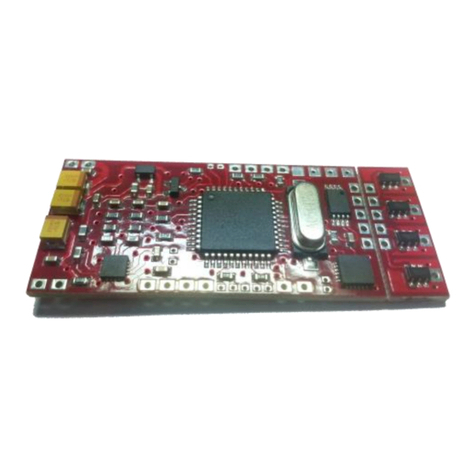
Naigon Electronic
Naigon Electronic Spark Color SC2-R3 Setup guide
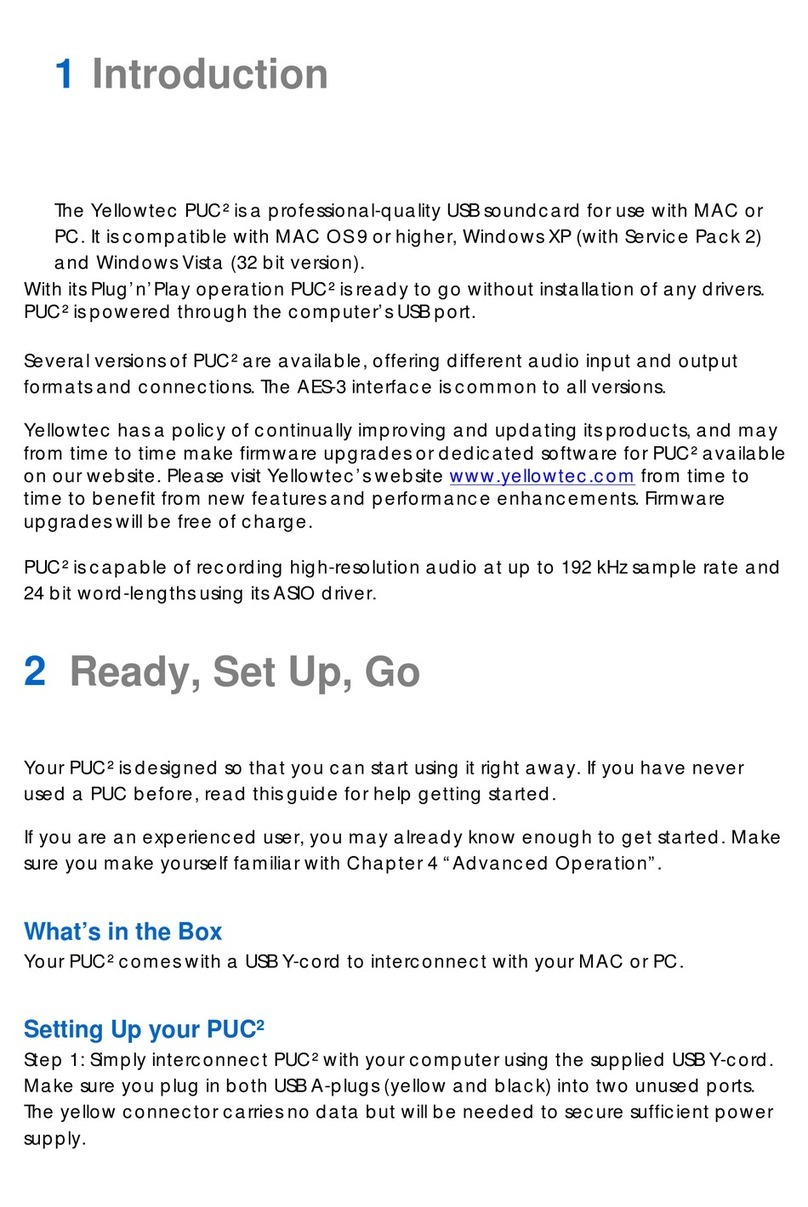
Yellowtec
Yellowtec PUC2 manual

Golding Audio
Golding Audio DMS3000 Connection and General information
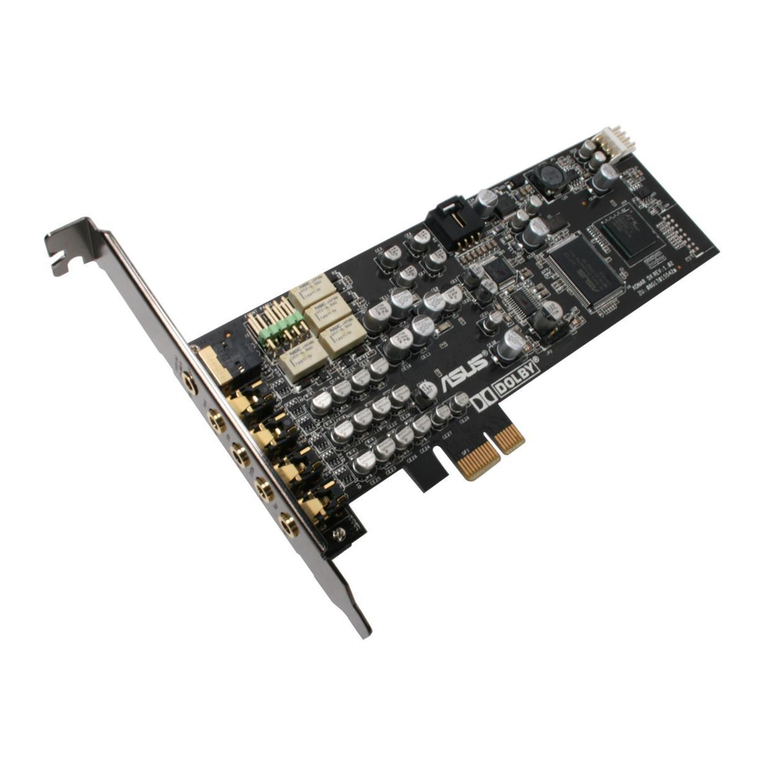
Asus
Asus PCI Express Audio Card Xonar DX user manual

Digigram
Digigram PCX924HR user manual

